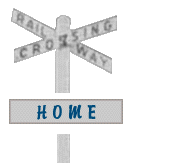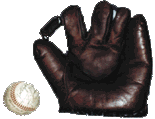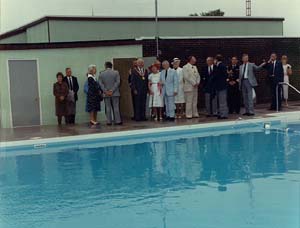








After the end of the Second
World War, men
returned from the front and tried to settle back into
life at home. Athletics provided the veterans with one of
their most important outlets. By 1947, they decided that
a local organization should be formed for the promotion
and organization of local sporting activities, such as
baseball and track and field events. Instead of charging
for memberships, the members decided to fund their
projects through donations from amongst themselves and
from the community. Their straight-ahead approach was
typified by a suggestion at one of their first meetings,  where a member stood up and said-- if
you want a sports field-- put a pot on the floor right
now and get a start on things. The Kensington Community
Athletic Association (which later became known as the
Kensington Area Recreation Association) soon had
accumulated enough funding for two ball fields,
facilities which allowed local teams to compete against
other towns province-wide.
where a member stood up and said-- if
you want a sports field-- put a pot on the floor right
now and get a start on things. The Kensington Community
Athletic Association (which later became known as the
Kensington Area Recreation Association) soon had
accumulated enough funding for two ball fields,
facilities which allowed local teams to compete against
other towns province-wide.
But recreation in Kensington has not always involved sports. In 1963, elementary students were moved into the old high school, leaving a spacious and still very serviceable building vacant in the middle of town. After meetings were held on a possible use for the location, it was agreed that it should be sold for a dollar to the Town of Kensington, on the condition that it be converted into a recreational facility for community youth. The finished Rec Center has since become a magnet for young people in the area, providing them with a gymnasium, bowling lanes, and a hall for dances. The rise in tourist traffic led to an expansion of the dining area and, at one time, the operation of a visitor information bureau. During the national centennial, a beautiful park was built directly adjacent to the Rec Center.
One of the groups to hold their meetings at
the Rec Center was the Lions Club, who have contributed
immeasurably to the development of Kensington. Chartered
on November 16, 1954, the club has always been at the
ready with time, money, and  helping hands for worthy
community causes. The club worked tirelessly to provide
meaningful activities for young people, such as the Red
Cross water safety program, a Junior Brass and Majorette
Band, and also a Youth Exchange. They also dedicated
themselves to supporting town institutions and
businesses; the Community
Gardens might never have risen from
the ashes in 1977 without their help, and they started
the first Tourist Bureau in the area to promote this
growth industry. Not only have the Lions looked towards
the town's future, but have also considered its past,
supporting the publication of a town history in 1973. And
one of the ways in which they fund-raise for these many
charitable causes is by providing another form of
recreation: the ever-popular Lions' bingo. Regardless of
who brings home the jackpot, the Lions guarantee that the
larger community is always the winner in the end.
helping hands for worthy
community causes. The club worked tirelessly to provide
meaningful activities for young people, such as the Red
Cross water safety program, a Junior Brass and Majorette
Band, and also a Youth Exchange. They also dedicated
themselves to supporting town institutions and
businesses; the Community
Gardens might never have risen from
the ashes in 1977 without their help, and they started
the first Tourist Bureau in the area to promote this
growth industry. Not only have the Lions looked towards
the town's future, but have also considered its past,
supporting the publication of a town history in 1973. And
one of the ways in which they fund-raise for these many
charitable causes is by providing another form of
recreation: the ever-popular Lions' bingo. Regardless of
who brings home the jackpot, the Lions guarantee that the
larger community is always the winner in the end.
 An outdoor swimming pool was opened on
July 11, 1985 at the center, a facility made possible by
a generous $50,000 donation by Hulda Smith, in the memory
of her brother Edward Van Koughnet. On hand for the
official opening of the pool was the Governor General of
Canada, Jeanne Sauve. Mrs. Smith also donated a medal to
be awarded to the youngest swimmer who swam the length of
the pool each year, dubbed "The Tadpole Award."
During the summer, the pool is full to capacity with
people trying to beat the Island heat. And for those less
aquatically inclined, the center is always abuzz with
other events, whether an auction, flea market, bingo
game, or card party.
An outdoor swimming pool was opened on
July 11, 1985 at the center, a facility made possible by
a generous $50,000 donation by Hulda Smith, in the memory
of her brother Edward Van Koughnet. On hand for the
official opening of the pool was the Governor General of
Canada, Jeanne Sauve. Mrs. Smith also donated a medal to
be awarded to the youngest swimmer who swam the length of
the pool each year, dubbed "The Tadpole Award."
During the summer, the pool is full to capacity with
people trying to beat the Island heat. And for those less
aquatically inclined, the center is always abuzz with
other events, whether an auction, flea market, bingo
game, or card party.
Hockey | Rinks | Horse Racing | Semple family | 'Big Jim' Pendergast
